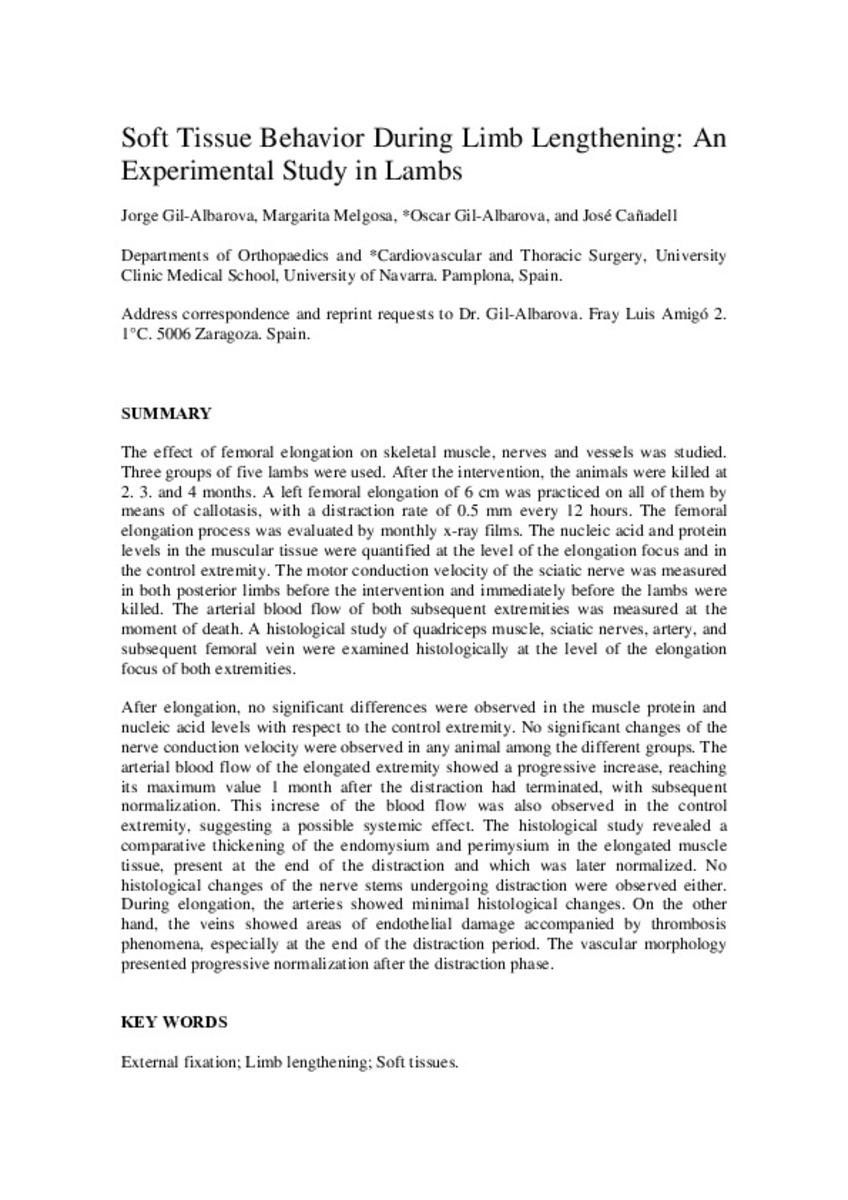Soft Tissue Behavior During Limb Lengthening: An Experimental Study in Lambs
Palabras clave :
Femur/surgery
Hindlimb/innervation/physiopathology
Muscle, Skeletal/pathology/physiopathology
Fecha de publicación :
1997
Editorial :
Lippincott, Williams & Wilkins
Cita:
Gil-Albarova J, Melgosa M, Gil-Albarova O, Cañadell JM. Soft Tissue Behavior During Limb Lengthening: An Experimental Study in Lambs. J Pediatr Orthop B. 1997 Oct;6(4):266-73.
Aparece en las colecciones:
Estadísticas e impacto
0 citas en

0 citas en

Los ítems de Dadun están protegidos por copyright, con todos los derechos reservados, a menos que se indique lo contrario.







